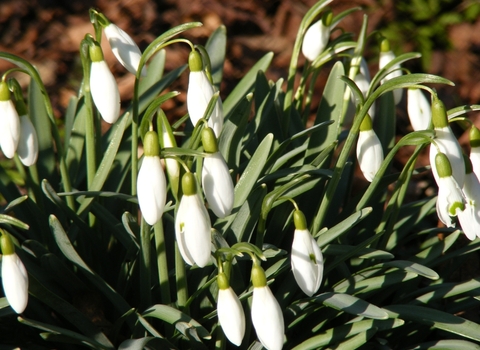©Les Binns

©Katrina Martin/2020VISION

©Katrina Martin/2020VISION
Snowdrop
Perhaps the first sign that spring is just around the corner is the snowdrop poking its way through the frosted soil of a woodland, churchyard or garden. From January, look for its famous nodding, white flowers.
Scientific name
Galanthus nivalisWhen to see
January to MarchSpecies information
Statistics
Height: up to 25cmListed as Near Threatened on the global IUCN Red List of Threatened Species.
About
The snowdrop is a familiar spring flower, coming into bloom in January and flowering until March. Despite its long history in the UK, however, it may not actually be native here; it is a native of damp woods and meadows on the continent, but was not recorded as growing wild in the UK until the late 18th century. Nevertheless, it has certainly become naturalised from garden escapees, and white snowdrop 'valleys' can now be seen across the country.How to identify
The snowdrop displays nodding, white flowers, each carried on a single stem. The narrow, grey-green leaves appear around the base of the stem. Snowdrop plants often form clumps.Distribution
Widespread.In our area
There are numerous locations in Shropshire with snowdrops. Managed woodlands, such as those at Attingham Park and other private estates are often good places to wander through a scene of bright white snowdrops.
Did you know?
In Yorkshire, it was customary for village maidens to gather bunches of Snowdrops and wear them as a symbol of their purity on February 2nd, which was Candlemas - the feast of the Virgin Mary.There are numerous locations in Shropshire with snowdrops. Managed woodlands, such as those at Attingham Park and other private estates are often good places to wander through a scene of bright white snowdrops.

